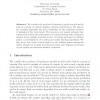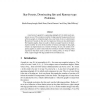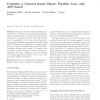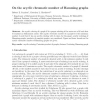481 search results - page 17 / 97 » Martin's game: a lower bound for the number of sets |
COLT
1999
Springer
14 years 26 days ago
1999
Springer
We consider the problem of learning to predict as well as the best in a group of experts making continuous predictions. We assume the learning algorithm has prior knowledge of the ...
FM
2008
Springer
13 years 10 months ago
2008
Springer
In [?], a practical algorithm for precise interval analysis is provided for which, however, no non-trivial upper complexity bound is known. Here, we present a lower bound by showin...
DM
2002
13 years 8 months ago
2002
A star forest of a graph G is a spanning subgraph of G in which each component is a star. The minimum number of edges required to guarantee that an arbitrary graph, or a bipartite...
KI
2011
Springer
13 years 3 months ago
2011
Springer
Abstract We present the General Game Playing system Centurio. Centurio is a Java-based player featuring different strategies based on Monte Carlo Tree Search extended by technique...
GC
2008
Springer
13 years 8 months ago
2008
Springer
An acyclic coloring of a graph G is a proper coloring of the vertex set of G such that G contains no bichromatic cycles. The acyclic chromatic number of a graph G is the minimum nu...




